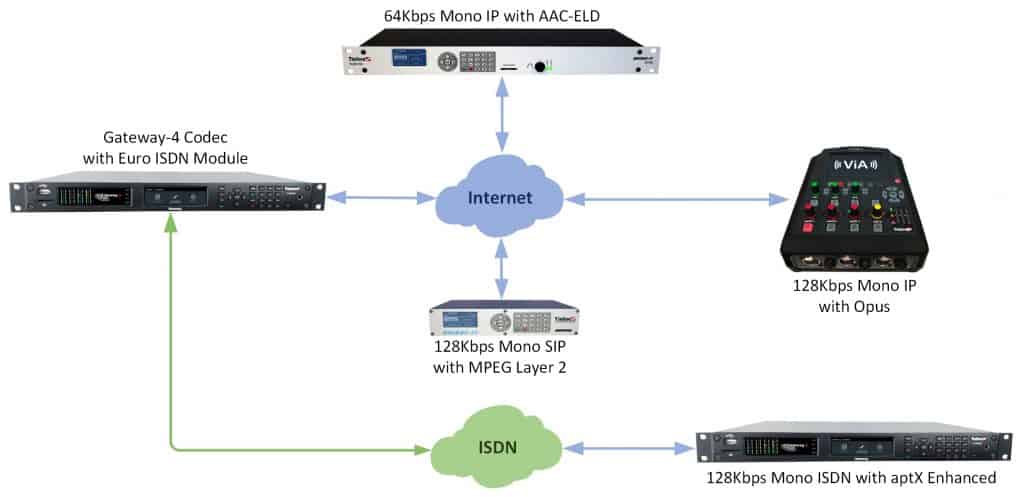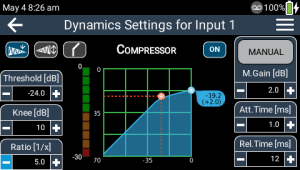Jake’s Take on the Benefits of Codec Protocols
Benefits of Codec Protocols
At Tieline we have been busy spreading the word throughout the Americas and the world about the superior quality of Tieline products, and the benefits of using our hardware. Not only do you get reliable audio codecs, but you also get a wide range of protocols, algorithms and features built into every Tieline product. In this month’s Jake’s Take I want to explore some of the core features that are built into all Tieline hardware devices.
Tieline and Other Protocols
Let’s start with protocols for connectivity. I thought I would discuss the Tieline protocol for connecting over an IP network. Our IP protocol for Tieline-to-Tieline communication is not just designed to deliver high-quality bi-directional audio, but also designed to handle additional data. Within Tieline hardware you’ll find that we offer a handful of General-Purpose Inputs & Outputs (GPIO) that can be transmitted in sync with the audio. The purpose of the GPIO is to allow the operator the ability to trigger external equipment like automation systems or tally lights at the studio or remote location.
Another cool feature is the ability to connect with 3rd party devices over the SIP protocol. This is built-in to all Tieline gear for interoperability with other codec manufacturers. With SIP you won’t get the additional data like you do with the proprietary Tieline protocol, but you will be able to pass bi-directional audio with a little bit of additional setup. If you’re interested in more information on the setup or about the SIP protocol in general, then take a look at our tech note here, or drop a note or give me a call.
Multiple Encoding Options
Our primary concerns are delivering high quality audio connections with low latency. Therefore, we provide our clients a multitude of options. One such option is the choice of algorithms included in every one of our codecs. There are over ten different compression algorithms to choose from in every unit. You may want to do a basic remote using the Tieline proprietary algorithm Music or Music PLUS. Or you also have another high-quality, low latency encoding option with the Opus algorithm. Having multiple algorithms from which to choose gives you the ability to help tailor your studio links to your broadcast specifications.

When it comes to audio delivery for point-to-point networks over IP, one of the biggest challenges broadcasters face is the ability to provide a stable link. Depending on the type of internet connection available, a technician may need to fine tune internet settings. At Tieline, our team has seen this problem and has developed features that can assist with facilitating rock-solid connectivity to the studio. For example, Tieline hardware includes our proprietary SmartStream PLUS redundant streaming feature in every codec we make. It allows the transmitting codec to duplicate the audio stream and resend the duplicate packet stream over an alternative socket. This can connect over the same network as the primary stream , or this link could travel over a completely different IP network type. This delivers a 100% duplicate IP packet stream for redundancy. Transmitting a duplicate redundant stream allows our codec receivers (decoders) to receive a secondary copy of the audio feed that can be reassembled into a single stream at the receiver location. This effectively eliminates packet loss in most situations.

Another Tieline feature included in all our hardware that can assist in providing a more stable connection to the studio would be our Fuse-IP data aggregation feature for bonding connections. This allows our products to share the audio data between two separate ISP networks. Fuse-IP technology can take two ‘less than optimal’ ISP networks and merge them together into a single virtual internet interface that is much more robust.

Take it from Jake at Tieline, when it comes to audio links we know a few things because we’ve seen a few things. Tieline products are built tough and are designed with the needs of our clients in mind and can be tailored to an operator’s needs. Whether you need GPIO support at the studio, or the ability to connect to another market that uses another brand, we have the right solutions to increase the quality of your audio connections. For those who are interested in sharing your story, or if you have an idea for a future “Jake’s Take”, please feel free to contact me directly at Jacob@tieline.com
For more information about Tieline codecs, or any of the technologies mentioned in this blog, visit http://www.tieline.com
Contact Tieline
- For USA, Canada & Latin America contact: sales@tieline.com
- For Australia and International: info@tieline.com
(Benefits of Codec Protocols was first published on March 3rd, 2021)




